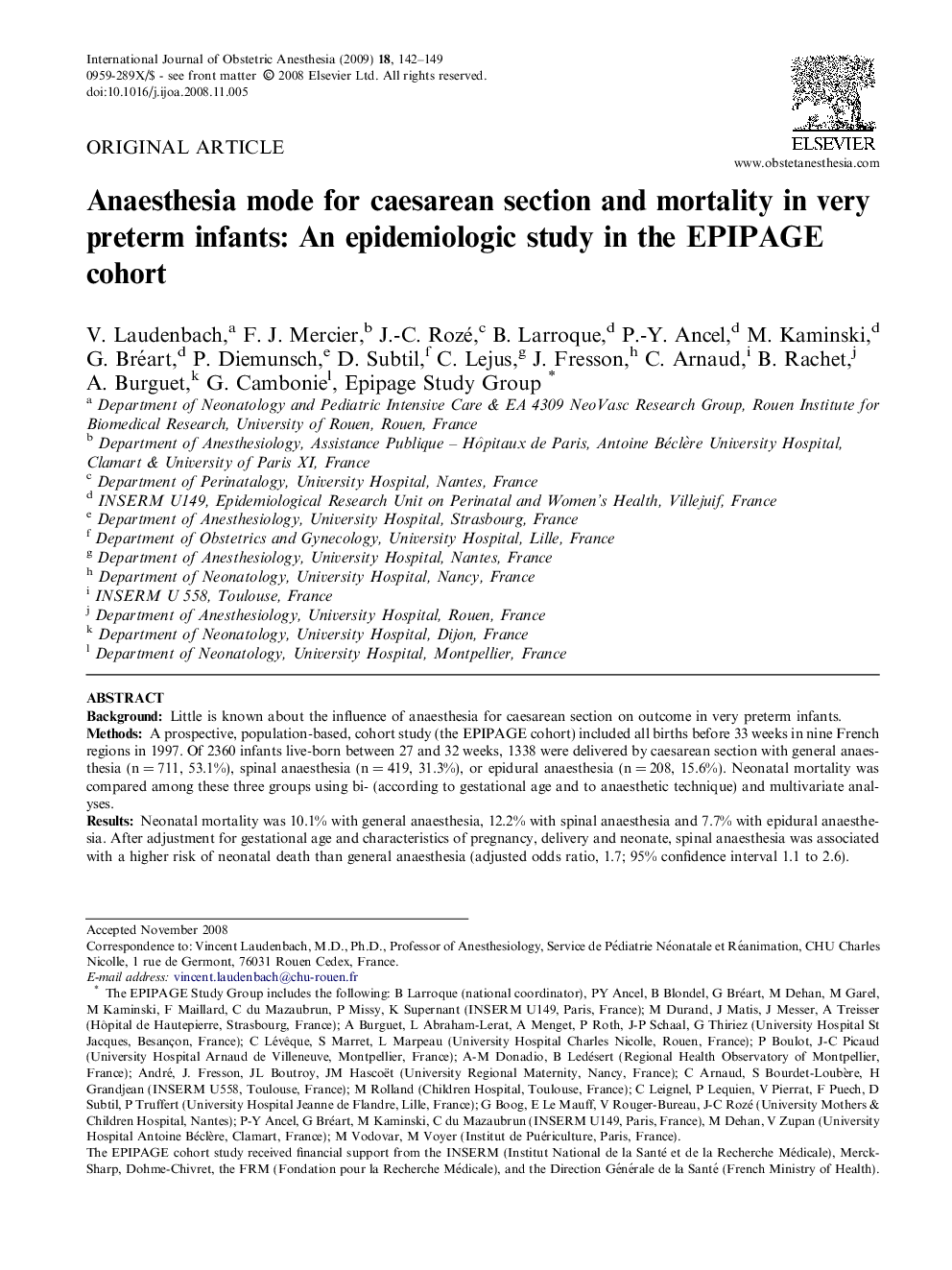| Article ID | Journal | Published Year | Pages | File Type |
|---|---|---|---|---|
| 2758526 | International Journal of Obstetric Anesthesia | 2009 | 8 Pages |
BackgroundLittle is known about the influence of anaesthesia for caesarean section on outcome in very preterm infants.MethodsA prospective, population-based, cohort study (the EPIPAGE cohort) included all births before 33 weeks in nine French regions in 1997. Of 2360 infants live-born between 27 and 32 weeks, 1338 were delivered by caesarean section with general anaesthesia (n = 711, 53.1%), spinal anaesthesia (n = 419, 31.3%), or epidural anaesthesia (n = 208, 15.6%). Neonatal mortality was compared among these three groups using bi- (according to gestational age and to anaesthetic technique) and multivariate analyses.ResultsNeonatal mortality was 10.1% with general anaesthesia, 12.2% with spinal anaesthesia and 7.7% with epidural anaesthesia. After adjustment for gestational age and characteristics of pregnancy, delivery and neonate, spinal anaesthesia was associated with a higher risk of neonatal death than general anaesthesia (adjusted odds ratio, 1.7; 95% confidence interval 1.1 to 2.6).ConclusionIn this population-based study, spinal anaesthesia was associated with an increased risk of neonatal mortality in very preterm infants compared to general anaesthesia (and epidural anaesthesia), independently from gestational age and characteristics of the pregnancies, deliveries and neonates. Although this multivariate analysis does not prove a causal relationship, the results suggest it could exist, particularly if maternal haemodynamics are poorly controlled. With recent significant change in the conduct of spinal anaesthesia, further studies are needed to investigate potential harmful effects of anaesthesia on very preterm infants delivered by caesarean section.
